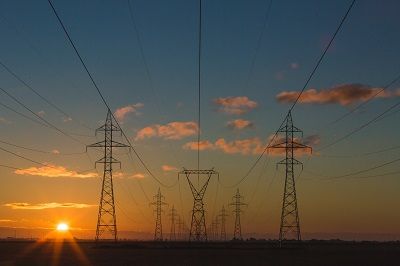By Markus W. Voigt, CEO of aream Group
In the first half of the year, more than half of Germany's electricity requirements were covered by renewable energy sources. A record. And what happened? Nothing! The grids remained stable, the lamps were on, the electricity came out of the socket. It turns out that the expressed fears of some market participants about incalculable electricity loads caused by green electricity are rather untenable assumptions.
The fear must be great that green electricity production will continue to grow in strength. Why else would even serious market observers keep warning about the consequences of feeding green electricity into the grid? The answer is simple: because green electricity is upsetting the laws of the industry that have evolved over decades. It is therefore an attempt to maintain its cherished status for as long as possible - and to continue making money from it for a while longer. Time and money that could also be used by the previous top dogs to convert their production to green. To that extent: Welcome to the real world, where renewable energy sources are indispensable.
But apart from a confrontation aimed at market and market shares, there is of course a real discussion about what renewable energies do with the grids and how they are kept stable. I have two points on this: The first half of the year has shown that the grids remain stable even with high shares of green electricity. Yes, that was partly due to the drop in demand caused by the pandemic. But supply was even higher, with both wind and solar power well above target for the first six months of 2020. According to the grid apocalypticists, the lines should all have collapsed.
However, it turns out that load distribution has become easier for the grids as a whole. The more decentralized plants produce, the less regional peaks, for example, become significant. This is where the portfolio effect comes into play, which ensures that the load peaks are spread out. This is because the capacity utilization of the plants varies greatly throughout Germany: in addition to solar and wind, biogas plants and storage solutions are becoming increasingly important. All this ensures that the networks are more evenly loaded overall - and are not driven to collapse if the wind blows more strongly in the north or the sun shines more frequently in the south.
In addition, the grids are becoming more and more intelligent. Just as artificial intelligence is becoming more and more common in the management of solar plants and wind farms, it can also be used for network security. AI can react very quickly, make a decision very quickly and, in case of doubt, take all the necessary steps independently. In this way, even small peaks can be intercepted, which no longer cause major problems.
Load scattering through portfolio formation and artificial intelligence thus ensure that the networks become more stable. Thus, they have already passed the first litmus test and beaten the green electricity record with flying colors.
PRESSEKONTAKT:
Leandra Kiebach
T: +49 (0)211 30 20 60 4-2
E: lk@aream.de
